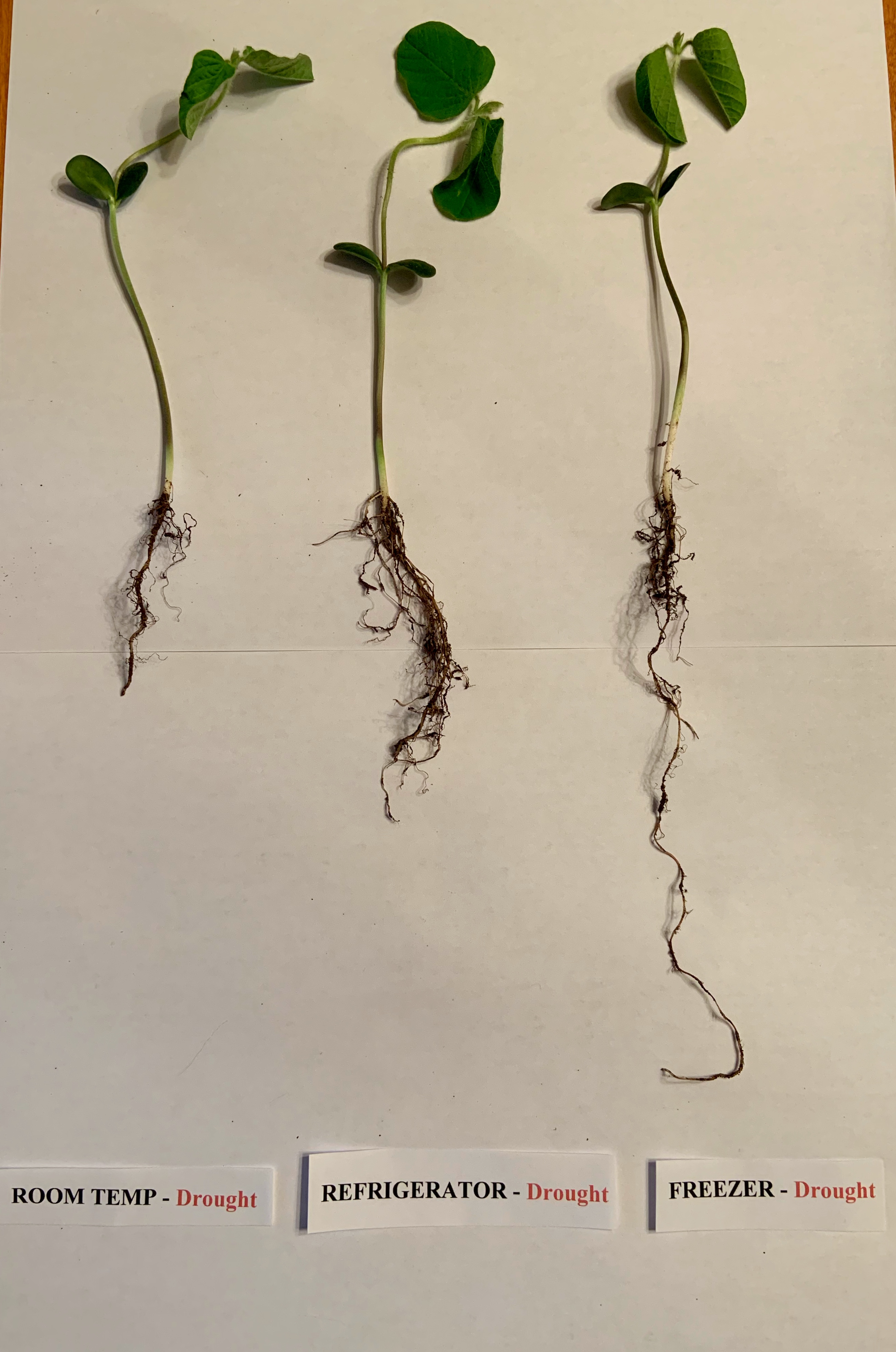The Effect of Seed Storage Conditions on the Drought-Tolerance of Soybean Plants
Which seed storage method is most effective in resisting drought?
Supervising teacher
Pamela Engbert
Student
Emily Swope
School
Bloom Carroll Middle School
Supporting files
swope-research-plan-2018-2019.docx

The effect of seed storage conditions on the drought-tolerance of its soybean plants was studied. The researcher hypothesized that soybean seeds stored in the freezer (-10°F to 5°F), with a moderate relative humidity (50% to 60%) will have the best outcome for drought tolerant soybean plants.
Soybean seeds were stored in tins in either the “Refrigerator”, “Freezer” or at “Room Temperature”. After seven days the seeds were grown in plastic planters using a grow light in either non-drought conditions with the ideal amount of water or simulated in drought conditions which lacked water. After 12 days of growth, the plants were dug up. The vigor index was recorded. Three trials were performed.
Soybean seeds stored in the Freezer had the best drought-tolerant soybean plants indicated by the highest average vigor index for both conditions. Freezer storage had the longest average and median root length for both conditions and the highest median shoot length for drought conditions. Soybean seeds stored in the Refrigerator had soybean plants with a higher median shoot length than the freezer by only 0.2 inches for non-drought conditions, but overall the freezer did the best. Soybean seeds stored at Room Temperature had the lowest average vigor index, and the shortest average and median root and shoot lengths for both conditions.
In conclusion, the Freezer is the optimum storage condition for seeds to grow in drought simulated soil and the best storage condition for seeds grown in non-drought soil conditions. This study supports the researcher’s hypothesis.The effect of seed storage conditions on the drought-tolerance of its soybean plants was studied. The researcher hypothesized that soybean seeds stored in the freezer (-10°F to 5°F), with a moderate relative humidity (50% to 60%) will have the best outcome for drought tolerant soybean plants.
Soybean seeds were stored in tins in either the “Refrigerator”, “Freezer” or at “Room Temperature”. After seven days the seeds were grown in plastic planters using a grow light in either non-drought conditions with the ideal amount of water or simulated in drought conditions which lacked water. After 12 days of growth, the plants were dug up. The vigor index was recorded. Three trials were performed.
Soybean seeds stored in the Freezer had the best drought-tolerant soybean plants indicated by the highest average vigor index for both conditions. Freezer storage had the longest average and median root length for both conditions and the highest median shoot length for drought conditions. Soybean seeds stored in the Refrigerator had soybean plants with a higher median shoot length than the freezer by only 0.2 inches for non-drought conditions, but overall the freezer did the best. Soybean seeds stored at Room Temperature had the lowest average vigor index, and the shortest average and median root and shoot lengths for both conditions.
In conclusion, the Freezer is the optimum storage condition for seeds to grow in drought simulated soil and the best storage condition for seeds grown in non-drought soil conditions. This study supports the researcher’s hypothesis.
